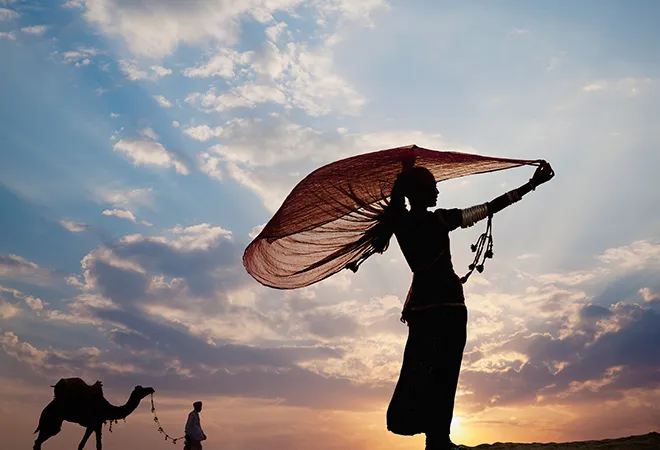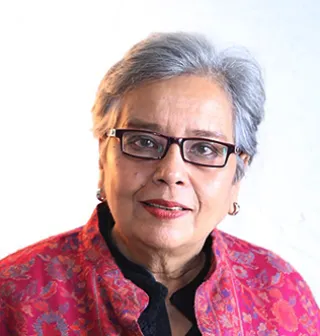-
CENTRES
Progammes & Centres
Location
There has been a large decline in the labour force participation of women.

Amidst news of a serious and continuing economic slowdown, there comes a small glimmer of hope that India may be doing better on the human development front. Though it has only climbed up by one point, the recent Human Development (2019) Report says that out of 189 countries, India has been ranked 129th (from 130th rank a year ago), according to the Human Development Index (HDI).
The Human Development Report, on the whole, has a more holistic way of looking at economic growth by not considering GDP growth rate alone, but other dimensions of development like life expectancy, education and health in determining a country’s economic progress also. This year’s report addresses the question of inequalities which is about the unequal distribution of wealth and power, and analyses inequality in three steps: beyond income, beyond averages and beyond today, proposing a number of policy options to tackle it.
The next generational inequalities are going to be centered around technology, education and climate crisis. In technology, the most advanced countries with high human development rank have high installed bandwidth. China leads the world in installed bandwidth and India’s share in the world’s installed bandwidth potential equals that of Germany, Brazil and France.
But, unlike countries with high human development, tertiary education rates in India are lagging behind with 24.5 percent of the school aged population in tertiary education. In East Asia and the Pacific, enrollment in tertiary education is at 44 percent.
The poorest communities in South Asia are most vulnerable to climate change. They are expected to be more exposed to droughts from warming scenarios with above 1.5 C in temperature in several countries in Asia. The rural population will also get a double shock of lower livelihood and hikes in food prices due to drop in global yields.
There is widespread multidimensional poverty in the world but throughout the South Asian region; millions have escaped multidimensional poverty and in India alone, 271 million were lifted from poverty from 2005/6 to 2015/16. Per capita income rose over 250 percent. Mean years of schooling increased by 3.5 years and expected years of schooling rose by 4.7 years. Yet out of 1.3 billion multi-dimensional poor in the world, South Asia alone shares more than 41 percent of the total number of multi-dimensional poor. India accounts for 28 percent of the 1.3 billion multi-dimensional poor. According to the report, India’s Jan Dhan Yojana for financial inclusion and Ayushman Bharat for healthcare of the poor, are crucial for reducing inequalities.
The report finds that despite progress, group based inequalities persist in the Indian subcontinent, especially affecting women and girls. While East Asia and the Pacific have the second highest rank in gender development index, South Asia has the widest gender gap in HDI. Surprisingly, the HD Report notes that more Indian men and women were showing biases in general social norms, indicating a backlash to women’s empowerment.
Recently the World Economic Forum has also come up with a startling news that India has slipped to 112th rank in Gender Gap Index. India’s ranking is lower than China’s (106th), Sri Lanka (102nd), Nepal, (101st) and Bangladesh (50th). One wonders why we are so far behind our smaller neighbours. The WEF has calculated gender gap between men and women in four key areas, health, education, economy and politics; in health and survival and economic opportunities, India is at the bottom of the pile. The Gender Gap index has tried to measure the disadvantages women have vis-à-vis men in these areas.
In economic participation, we know how poorly Indian women are doing in the last few years. There has been a large decline in the labour force participation of women (23.3 percent in 2017-18 and 26.9 percent in 2018) and it is below world average (48.47 percent in 2018; World Bank). Women are also getting less economic opportunities than men due to various reasons. In the villages, women do most of the housework and other unpaid work and have no time to do outside jobs but for urban women, even when they get jobs there is concern about the safety of transport from the family, low pay and sexual harassment.
In access to health also, women have lesser access to healthcare than men due to the practice of patriarchy which gives preference to males and women themselves are trained not to complain overtly about their ailments so that very often when the medical help comes, it is too late. The WEF also noted that four large countries, Pakistan, India, Vietnam and China do not have the same access to health as men.
In education, female students are spending less years in school than male students. The mean years of schooling for girls is 4.7 years whereas for boys it is 8.2 years. Girls are often withdrawn from school after they reach puberty and their education or skill training is cut short. Most of the schools also do not all have separate toilets for boys and girls which parents object to and are reluctant to send girls to school.
Another major source of concern in India is female foeticide and its consequence of having abnormally skewed sex ratio at birth at 91 girls for every 100 boys. This practice though closely monitored is still going on in the villages. The Beti Bachao, Beti Padhao campaign seems to have some impact but it is not universal.
India has, however, improved on the political empowerment subindex at 18th place, largely because the country was headed by a woman for 20 years in the past 50 years. But political representation of women in the Parliament is low at 14.4 percent. (122nd rank) and 23 percent in the Cabinet. India also has very few women on the boards of corporate companies.
It is indeed a shame that from 2006, when the first WEF gender gap report started, India has slipped four spots on gender parity. Bangladesh has the highest gender equality in the region. India’s economic power would be greatly enhanced if women were given proper healthcare, education, economic opportunities and if they could be better represented in the political institutions across the country.
The views expressed above belong to the author(s). ORF research and analyses now available on Telegram! Click here to access our curated content — blogs, longforms and interviews.

Jayshree Sengupta was a Senior Fellow (Associate) with ORF's Economy and Growth Programme. Her work focuses on the Indian economy and development, regional cooperation related ...
Read More +